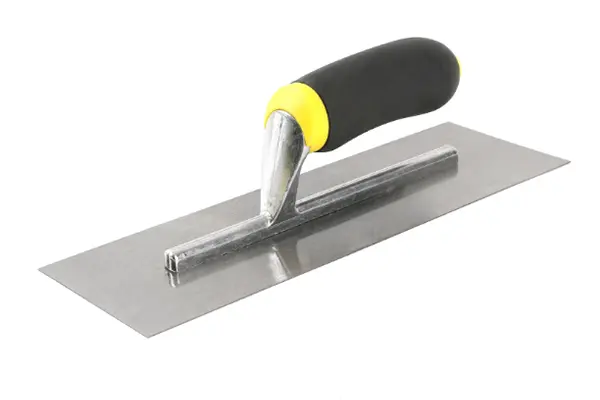When it comes to finishing concrete surfaces, using the right tools is essential. While steel trowels are commonly used in construction, there are situations where using them on concrete can lead to potential risks and drawbacks. In this article, we will explore why it’s not advisable to use a steel trowel on concrete and discuss alternative tools and techniques that can provide better results and minimize the risks involved.
Understanding Steel Trowels and Concrete Finishing
Steel Trowels: Common But Not Always Ideal
Steel trowels are widely used in the construction industry for finishing concrete surfaces. They are typically used in the final stages of concrete placement to achieve a smooth and polished appearance. Steel trowels come in various sizes and shapes, allowing for different finishing techniques. However, it’s important to note that while steel trowels have their benefits, they may not always be the best choice for certain concrete applications.
The Risks of Using Steel Trowels on Concrete
Surface Hardening and Air Trapping
One of the risks associated with using steel trowels on concrete is surface hardening. When concrete is troweled too early or with excessive force using a steel trowel, it can cause the surface to harden rapidly. This premature hardening can lead to a weakened bond between the top layer and the rest of the concrete, resulting in potential cracking or delamination over time. Additionally, if air becomes trapped beneath the trowel during the finishing process, it can create unsightly air voids on the surface.
Burnishing and Overworking
Another risk is burnishing or overworking the concrete surface. When a steel trowel is excessively used, it can create a polished and glossy appearance. While this may be desirable for certain applications, such as decorative concrete, it can be problematic for exterior surfaces or areas that require a higher coefficient of friction. Burnishing the surface can make it slippery and prone to accidents, especially when wet. Overworking the concrete can also lead to an uneven surface with increased porosity, which can affect the durability and longevity of the concrete.
Alternatives to Steel Trowels for Concrete Finishing
Floats and Edgers: Creating a Smooth Finish
Instead of using steel trowels, alternatives such as floats and edgers can be utilized for concrete finishing. Floats, typically made of wood, magnesium, or aluminum, are used to level and smooth the surface of freshly placed concrete. They help distribute and consolidate the concrete while reducing the risks of surface hardening and air trapping. Edgers, on the other hand, are used to create clean edges and control joints in the concrete. They are available in various shapes and sizes to achieve different profiles and finishes.
Power Trowels: Efficient and Precise Finishing
For larger concrete projects, power trowels can be a viable alternative. Power trowels are motorized machines equipped with rotating blades or pans that provide efficient and precise concrete finishing. They offer greater control over the finishing process and can achieve a smoother surface compared to manual troweling. Power trowels are particularly useful for large slabs or areas where time is of the essence.
Conclusion
While steel trowels have their place in concrete finishing, it’s important to be aware of their limitations and risks. Premature hardening, air trapping, burnishing, and overworking are potential issues that can arise when using steel trowels on concrete. By considering alternative tools and techniques, such as floats, edgers, and power trowels, you can achieve better results while minimizing the risks associated with steel trowel finishing. It’s crucial to assess the specific requirements of your concrete project and choose the appropriate tools and methods that ensure a durable, aesthetically pleasing, and safe concrete surface.
Post time: Mar-14-2024







